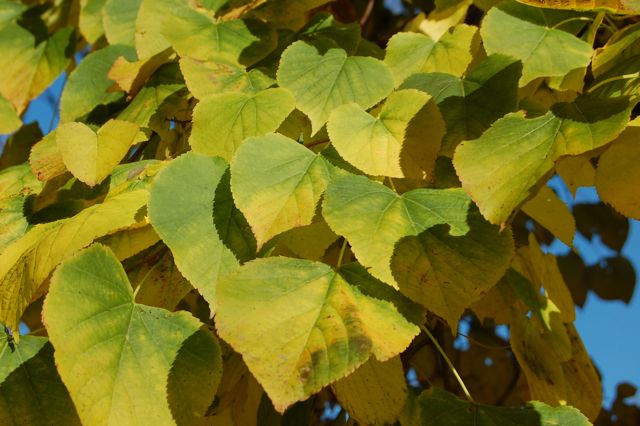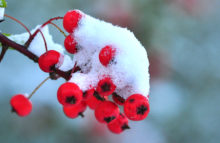See how the mature tree has a shape like the club in a suit of cards? The trunk flares out at the base, and the crown of leaves and branches has that clublike wide and somewhat trailing near the bottom, rounded at the top shape.
Basswoods can grow to be rather grand trees; up to 120 feet (40 metres). The leaves have a heart shape, like their cousins the little-leaf linden (Tilia cordata), though as you can imagine are much larger. They’re also very toothy along the margins.
Also like the little leaf linden, basswoods have scented flowers that droop in a whitish cluster or cyme attached to a single elongated white bract. The small, nutlike fruit also suspends from this bract, which helps the fruit travel when it drops from the tree. I call it a wingnut, but have no idea if anyone else does.
When the leaves are off the trees, basswood and other tilias can be recognized by their large, rounded distinctly reddish buds. They remind me of tiny hearts (actual hearts, not the stylized ones).






6 comments
Very informative, I really need to take a course in trees. I do not know the difference between so many varities ie: green and white ash!
Deborah, you should pick up a copy of Seeing Trees, a wonderful book that profiles some of our most common trees in astonishingly minute (and beautiful) detail. We reviewed it a while back.
Very helpful. I'll be on the lookout for them while I walk thru the woods.
A simply beautiful tree!
What a beautiful tree the basswood is! I'm not familiar with it, although I have heard of it. Do you know how far south it grows? I am in zone 7b. Your blog is very interesting. I love the picture of the two of you as little girls in the lettuce patch – so cute!
Deborah, you're in luck. The link to Ontario Shrubs and Trees at the end of our post includes a map — which shows the basswood all long the east, right down to Florida.